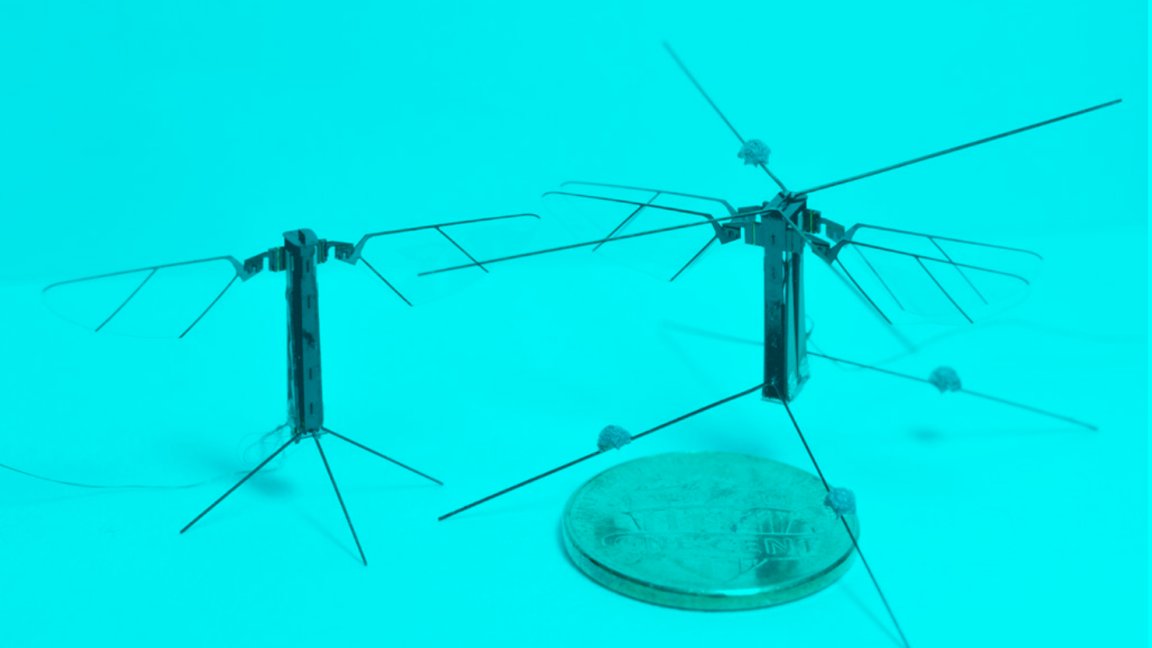
Tiny Dancer
A team of engineers from the University of Southern California in Los Angeles built a four-winged flying robot called Bee+, which weighs just 95 grams and sports a footprint smaller than a penny.
Harvard researchers built another tiny flying robot, called RoboBee, in 2013. It weighed only 75 grams.
But RoboBee featured just two wings, which made its flight far erratic and uncontrolled. Four wings gives Bee+ a way to control pitch and its orientation in space.
Four > Two
The biggest challenge the Bee+ team faced to bring the number of wings up to four was the weight of the actuators responsible for making them flap. The researchers came up with a new “unimorph” design that relies on a single strip of piezoelectric material that expands and contracts when a current is sent through it, cutting the weight of the four actuators roughly in half.
“The proposed approach has numerous advantages in terms of weight, dimensions, aerodynamics, control and fabrication,” the team told MIT Technology Review.
A preprint of their research was published to the preprint repository arXiv.
There’s one huge shortcoming of both the RoboBee and the Bee+: they’re technically not drones, as they rely on a tether for an energy source. But once battery technology catches up with nanoscale robotics, the Bee+ could one day take flight all on its own.
READ MORE: A tiny four-winged robotic insect flies more like the real thing [MIT Technology Review]
More on tiny robots: Watch an Adorably Tiny Robot Go for a Teeny Run